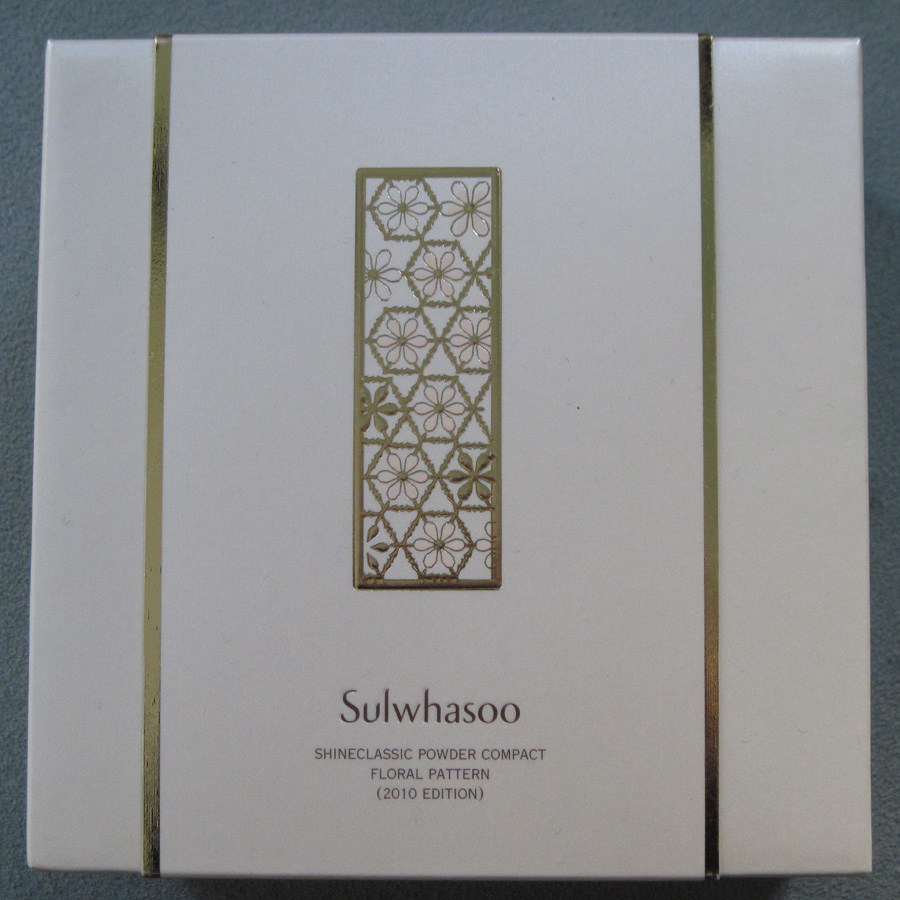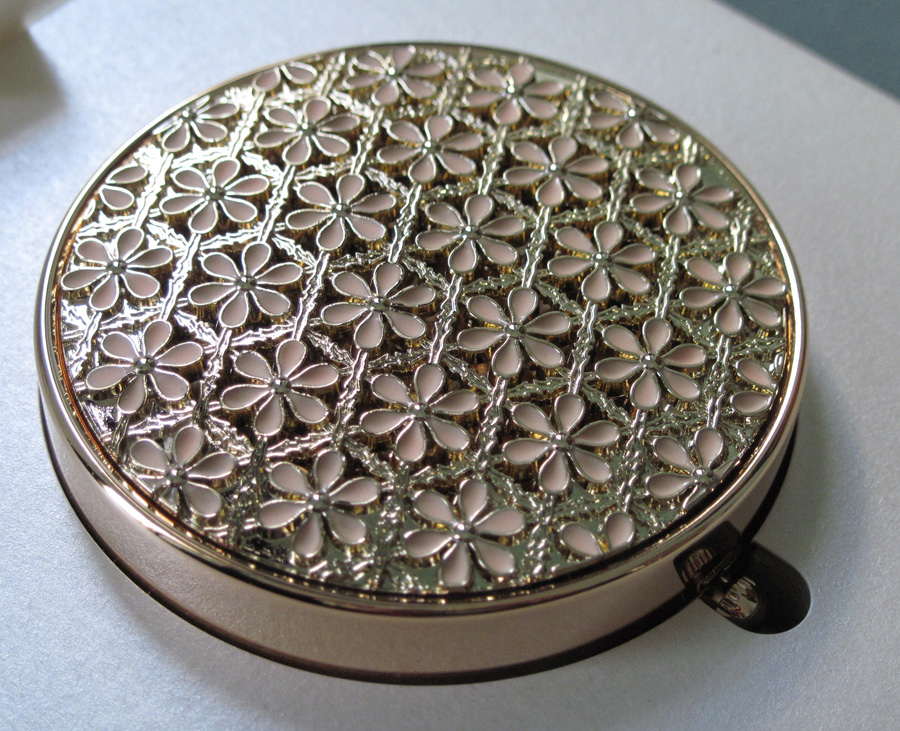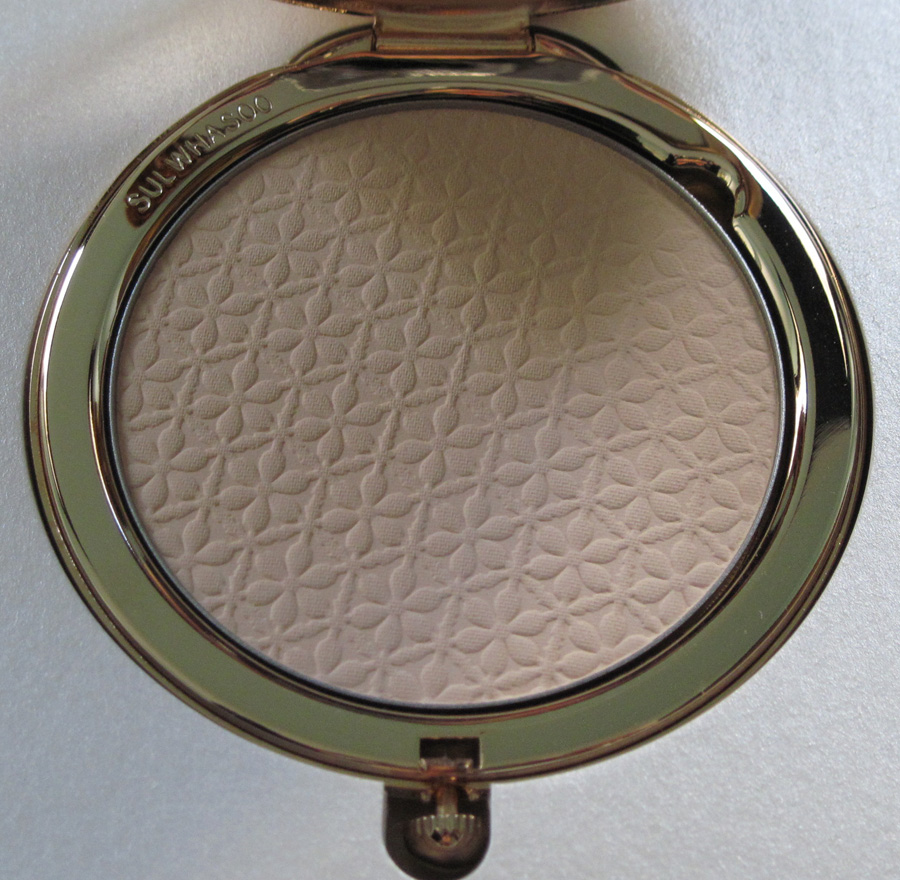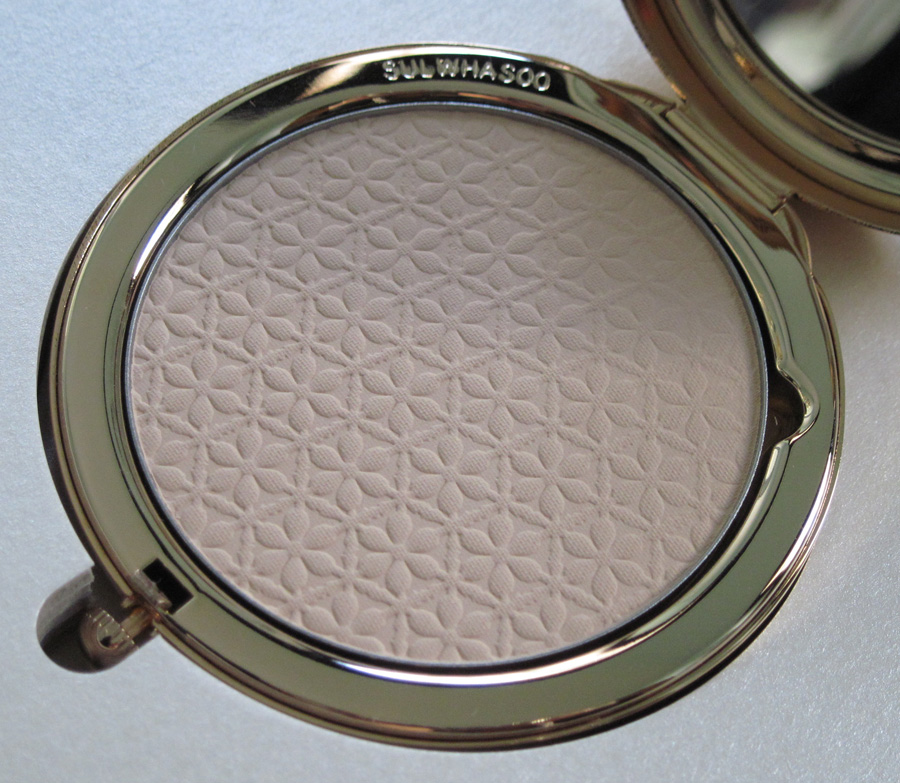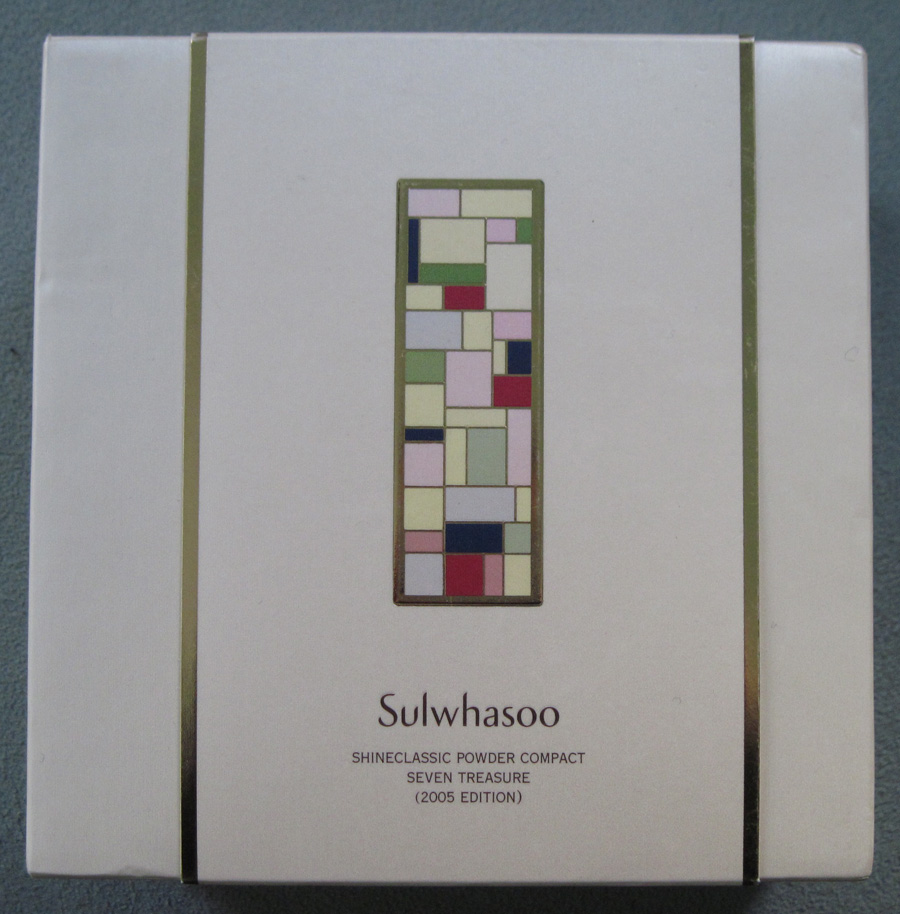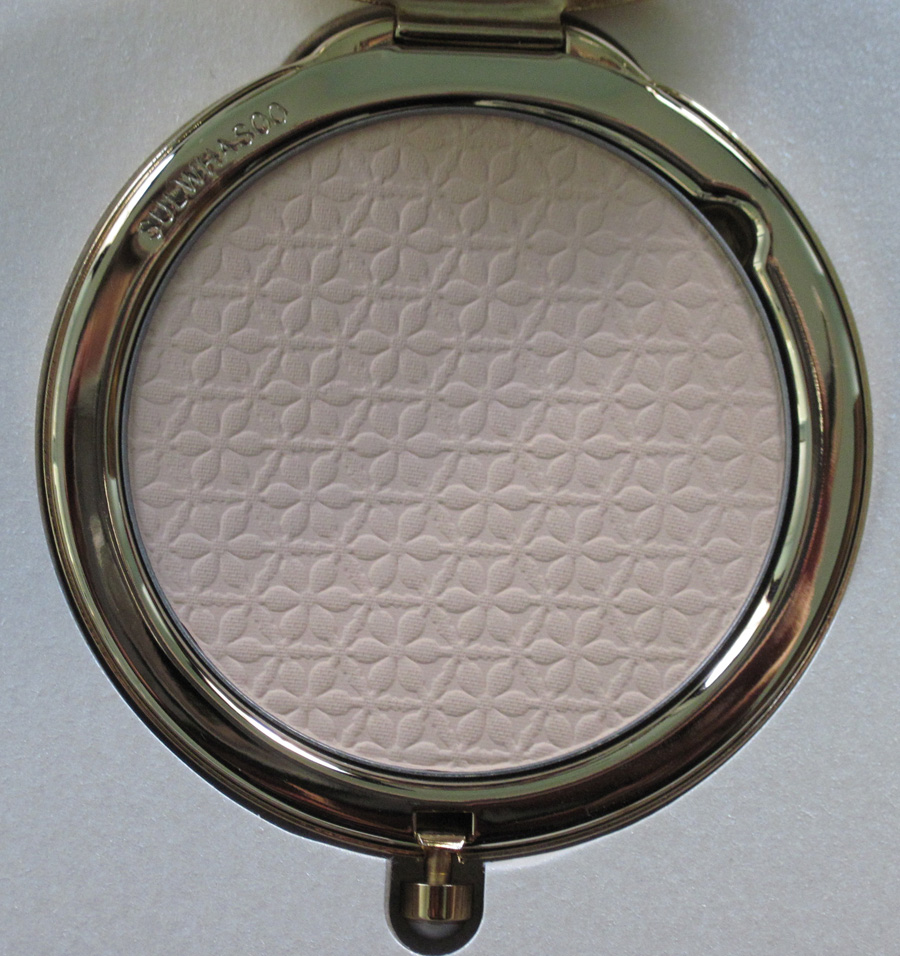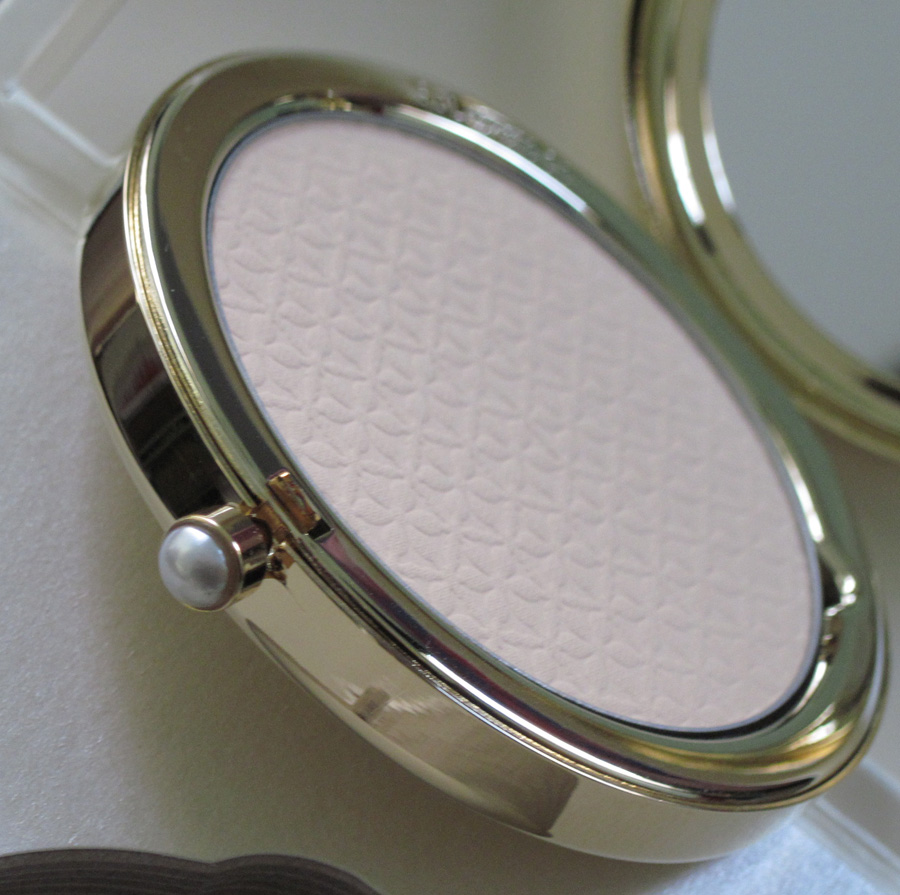I first laid eyes on these limited-edition compacts from Korean luxury brand Sulwhasoo in the November 2012 issue of Elle magazine. Since 2003, the company has been releasing their "Shine Classic" compacts featuring a new design (much like the Kanebo Milano compacts) that is "inspired by various elements that symbolize Korean beauty". When Neiman Marcus had them on sale for half price a few weeks ago, I pounced and bought two for the Museum – the 2010 and 2005 editions.
According to Neiman Marcus, "Sulwhasoo took inspiration
from a classic Korean motif in creating this compact, weaving the iconic
six-petal plum blossom into its design. Found on the flower-patterned
doors of Buddhist temples, the plum blossom evokes the infinite beauty
of curves and straight lines. The color within reflects the
apricot color of plum blossom coming into bloom after winter, while plum
blossom extracts offer skin the same protective benefits that shield
the delicate flower from the elements."
Indeed, compare the flower's shape and hexagonal design they form to these doors on Korean Buddhist temples.

(images from daleskoreantempleadventures.blogspot.com)
The powder itself has an identical pattern.
And here's the compact from 2005. "The traditional Korean quilt is made by connecting colorful pieces of
fabric to pray for good fortune. Since the old times, quilts conveyed
the belief that endeavors bring good luck. The beauty of liberal,
yet moderate patterns created by small pieces is part of the Shine
classic design in the spirit of 'gathering little for a fortune.' Also,
the technique of Seven Jewels has been applied to uphold the Korean
aesthetic of seven jewels in beautiful and rare colors."
The pearly clasp is a nice little detail.
I couldn't find anything on the "seven jewels" technique, but I did find a traditional Korean quilt. The compact's design is spot-on with its bold colors and piecemeal application.

(image from scarlet.unl.edu)
There are several other Sulwhasoo Shine Classic compacts (and Colorpacts) that I would dearly love to get my hands on, but I will post about those as I hoard collect them. 😉
